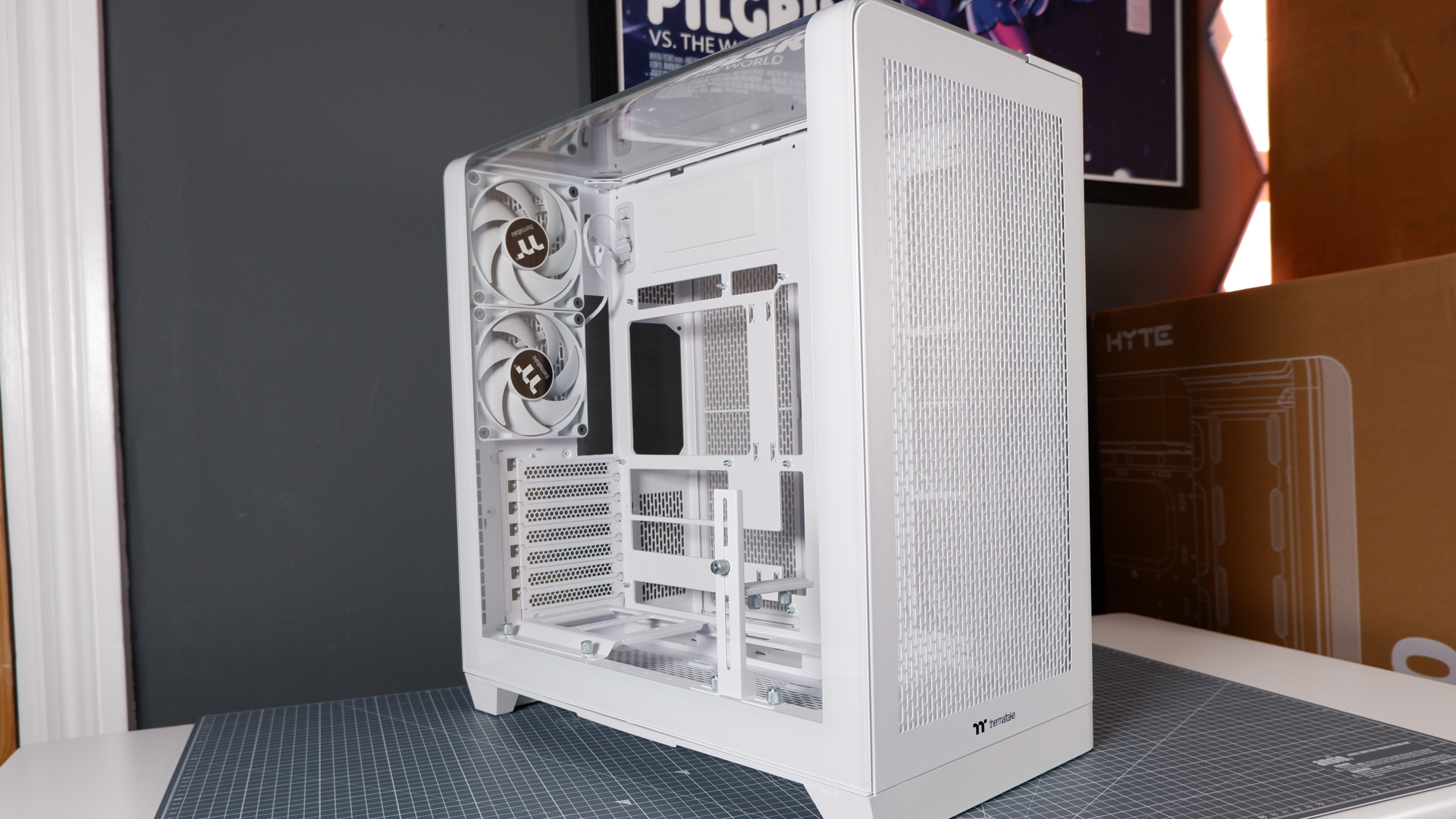Guild Wars 2 exclusive: ArenaNet breaks down the changes coming to all 9 new elite specs in the next expansion
After a beta in August, ArenaNet is fine tuning its new elite specs ahead of Visions of Eternity's release later this month.
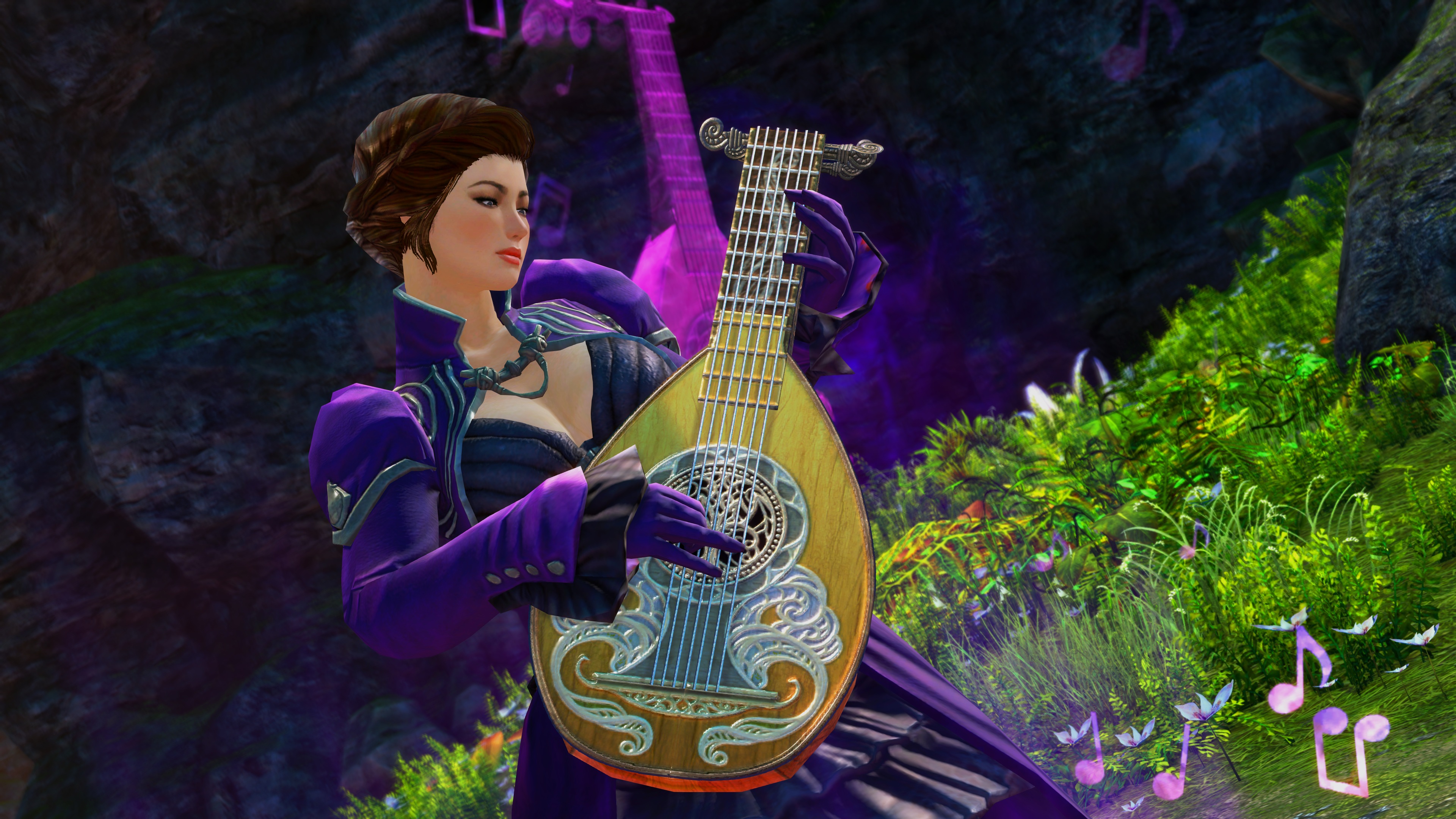
For the first time since switching to an annual expansion cycle, Guild Wars 2's next release will introduce a new set of elite specializations for each of the game's nine classes—or professions, as they're called in-game. Elite specs are a pretty big deal—making fundamental changes to how a profession plays. New traits, utility skills and an overhaul of the base profession mechanic means entire new builds for players to try.
"We definitely figured out that we wanted to do elite specs pretty early," says Cal Cohen, senior game designer for Guild Wars 2, in an interview with PC Gamer. Previous annual expansions have focused on adding new weapon options for each profession, which Cohen notes are "a lot more specific" in what they can do for a profession's kit.
New elite specs, meanwhile, give ArenaNet a lot more options in what they can pursue. "When we look at elite specializations, we really try to shift the profession mechanic into something more radical … so that the gameplay is significantly changed. And usually elite specs can also fill a couple of different roles. So whenever we can do elite specs, I think we want to do elite specs."
The new set of elite specs, which are launching later this month, are all themed about the recently introduced Tyrian Alliance—an international group of characters from around the game's existing world, representing the countries that players have traveled to across the last decade. That makes it a more varied bunch then previous sets of elite specs, which were more closely themed around a specific expansion. Here we have elite specs that cover everything from Elona and Cantha to Lion's Arch—with more than a few that take direct inspiration from Guild Wars 1.
Back in late August, a beta test gave players a chance to try out the new specializations. "Overall the reception is really good," says Cohen. "Obviously none of the specs are perfect, and we knew that going in—we know that as players get their hands on them, we're going to get so much more feedback than we could ever generate internally. There's going to be things that we missed or things that don't necessarily land as well with the players, that maybe people internally didn't have as strong feelings about. That's good. We want to make these specs even better. Seeing a lot of the pain points that players are hitting as they're playing these specs more and more, that's really valuable to us. I think maybe some of the things—some of the crazy ideas we tried—ended up going pretty well. And maybe some of them didn't land quite as well, and that's fine. We have some time to go back and iterate on things that didn't necessarily work."
Shortly after the test concluded, I got to chat to Cohen about the new specs—running through each in turn to get a sense of not just the themes and ideas behind it, but also the feedback coming out of the beta that ArenaNet plans to address.
Necromancer: Ritualist
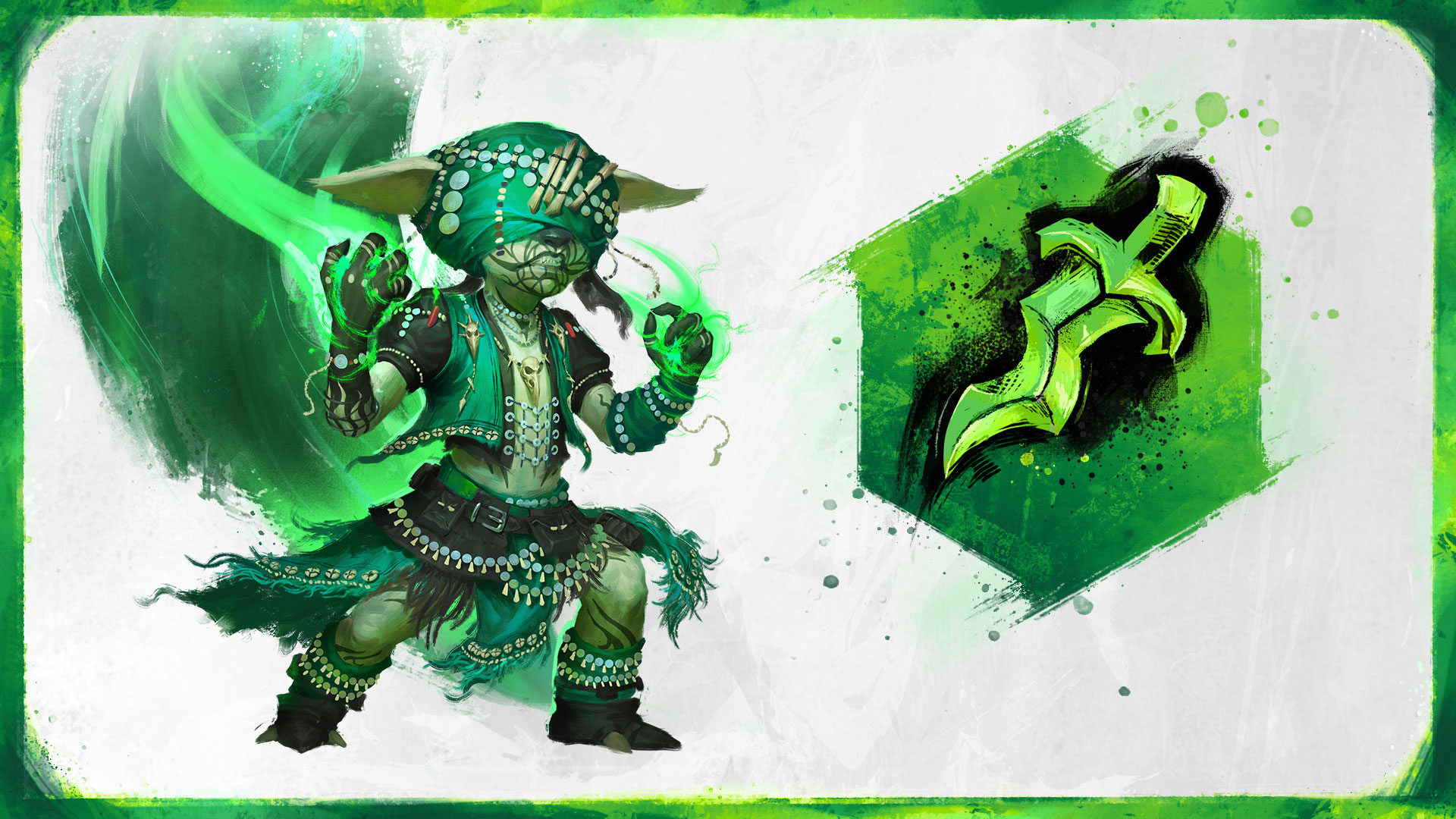
The Ritualist is one of a handful of new elite specializations that call back to the original Guild Wars—finally tying the spirit summoning profession to GW2's necro. As with most other Necromancer specs, the central mechanic is about building up life force to enter the shroud—gaining temporary access to new skills for as long as you have enough life force to maintain it. It's the shroud that grants the ability to summon the Ritualist's three spirits: Anguish, Wanderlust and Preservation.
Keep up to date with the most important stories and the best deals, as picked by the PC Gamer team.
Each spirit has a different flavour. Anguish is about damage, Wanderlust is crowd control and conditions, and Preservation is for healing and boons. And once placed, you can choose to 'rupture' those spirits for additional effects. Its setup lends itself to power DPS builds, or to support builds focused on quickness boons and healing.
Ritualist's upcoming changes
While there was a positive reception to Ritualist in the beta, the main point of feedback was that, once you've summoned your spirits, there was little else to actually do while in shroud. "The shroud skills are maybe not quite impactful enough," agrees Cohen. The longer cooldowns of spirits meant that, once summoned, there was little left beyond the auto-attack. And for players taking the Grandmaster trait that keeps spirits active after you leave the shroud, you can feel penalised for actually using your skills—because you need to instead preserve your life force to sustain them. "For that build in particular, the best way to play it seems to be to just pop into shroud, press Anguish again, don't even necessarily press Wanderlust because the damage is maybe too low, and then exit out again. Because then that's maximizing your life force, your spirit uptime."
ArenaNet is now looking at how to make your shroud matter more. In addition to making the summons more potent, possible options also include a rework of the shroud's fifth skill, which currently shadowsteps you and your spirits to a target location. "This is very much a utility-focused skill that maybe doesn't have as much of the impact as some of the other shroud fives we see, like the big CC with Harbinger or the giant scythe with Reaper," says Cohen, referencing the Necromancer's other shroud-based elite specs.
The team is also looking at making the attacks that trigger alongside a spirit summon more potent—making it more worthwhile to stay in shroud and cast multiple skills.
Elementalist: Evoker
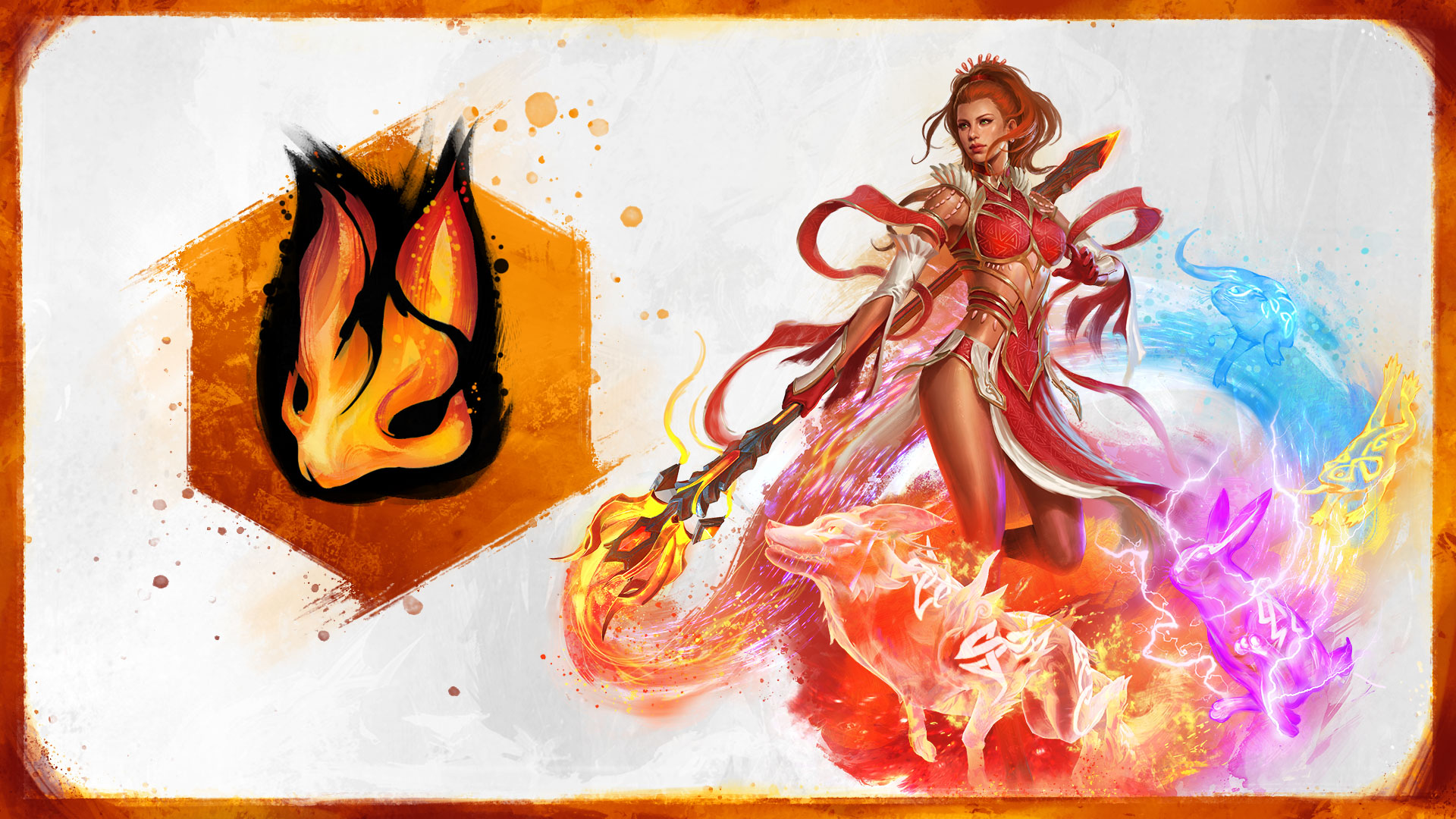
Where most Ele builds are about jumping around the profession's four elemental attunements, making use of the separate weapon skills that each one offers, Evoker is more about picking your lane. Here you choose a specific element as your focus, and get a matching familiar who follows you around—helping out in combat and providing benefits for prioritising your elemental specialty in combat.
ArenaNet's design goal for Evoker, then, is to create four viable builds—one for each of the familiars. Fire is your condition DPS build, and summons a fox familiar. Air is your power DPS build, and summons a hare. Water is healing, and grants an otter familiar. And Earth is all about hanging out with a toad, and also CC and protection—marking it as more of a PvP option.
Evoker's upcoming changes
Thematically it's one of my favourite of the new specs, but in the beta not all of the attunements landed as well as they could have—particularly on the support side. ArenaNet struggled with trying to do too many things in the Evoker traitline. The initial idea was that certain traits would be stronger with specific elements, but ultimately there wasn't enough room within the traits system to support this. "We ran into the problem where we ran out of space in the traitline to actually flesh out all the builds, or where there's only one set of traits that each of these builds could take," says Cohen. "It ended up not actually being interesting gameplay-wise, even if the theory was cool."
Cohen expects that reworking the traits will open up space for more variety. "We're probably expecting a lot more generic or a lot more of the dual-type traits, where it's a trait that's good for fire and air. Those are going to be the main DPS elements, so we're going to blend those together for sure. That's going to open up a lot more space in the traitline to add a lot more support boons, because that's the big flaw in the beta of all the support builds for Evokers—they just didn't have access to enough boons for their allies." Another thing Cohen calls out is moving the boon generation of the Familiar's Blessing Grandmaster trait down to the Master tier, meaning support players also have the option of picking the Grandmaster trait that locks you into your chosen element (in exchange for significant cooldown reductions) while still having access to alacrity.
ArenaNet is also looking at allowing the familiar's skill to autocast, which was another big point of feedback. "It's definitely a priority, because if you are playing very quickly … it's frustrating to use my weapon skills, press F5, use my weapon skills, press F5. It's a really weird key binding. We want to make sure the basic skills—the one that you always want to fire off—are given the option to enable auto-attack."
Mesmer: Troubadour
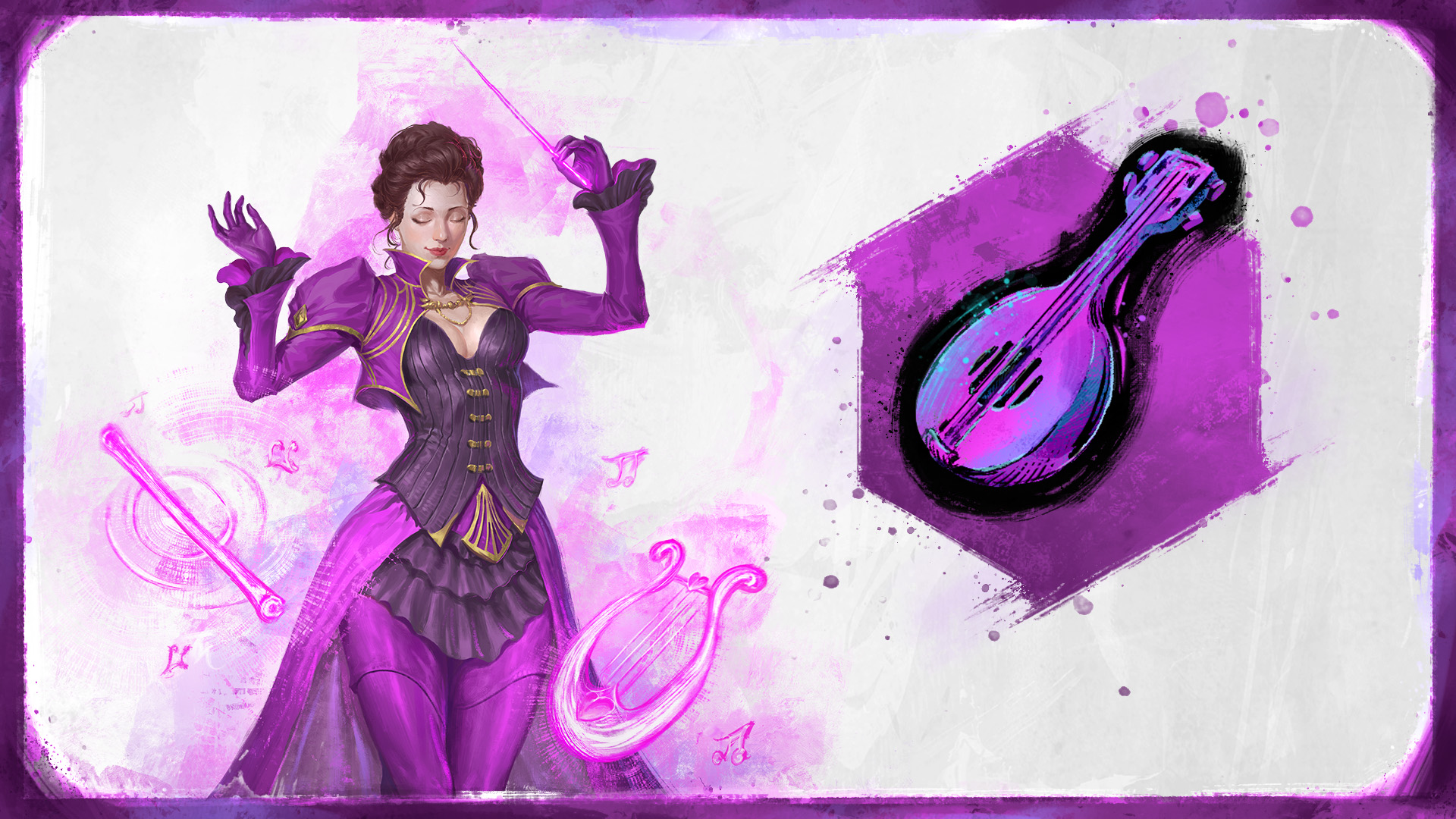
Illusions are out, instruments are in. The Troubadour gives Mesmer's a new bardic theme, playing instruments and reciting poems in order to deal damage and support allies. Instead of generating and shattering clones, you build notes and use them to spawn spectral instruments—a lute that does power damage, a flute that applies conditions, a drum that dazes and stuns, and a harp that heals allies.
How long each instrument lasts will depend on how many notes you generated before it was summoned. Each instrument has a corresponding Tale—a utility skill that grants extra effects if it's used while its paired instrument is playing. Recite the Tale of the Honorable Rogue, for instance, and you'll cleanse movement impairing conditions for yourself and allies. Do it while the drums are playing, though, and you'll also grant everyone superspeed for a few seconds.
Troubadour's upcoming changes
Much like Ele, there's a strong thematic throughline in the Mesmer's new elite spec—one that feels particularly cohesive thanks to the obvious interactions between profession skills and utilities. If anything, though, players wanted that theme to be more present in gameplay—its spectral instruments making themselves more known. "We just want to make sure that the gameplay around the instruments feels good," says Cohen, suggesting more tuning is planned.
Similarly to Evoker, Troubadour's balance changes are going to be focused on the spec's traitlines. In the beta, plenty of traits mapped directly to specific instruments—a lute trait that increases damage, a flute trait that applies an extra condition. "Trying to do too many things in the traitline muddies what it can actually do in terms of real builds," says Cohen. "Our support build is maybe too linear, or not interesting enough, because our choices are very spread out." Right now, too much of the trait selection is pre-defined by the build you're trying to make, resulting in obvious picks that feel necessary to take. "That's taking up a lot of space in this traitline that could have otherwise been spent fleshing out different ways for the support build to do things, or really hammering into the iconic moments of the Troubadour."
Ranger: Galeshot
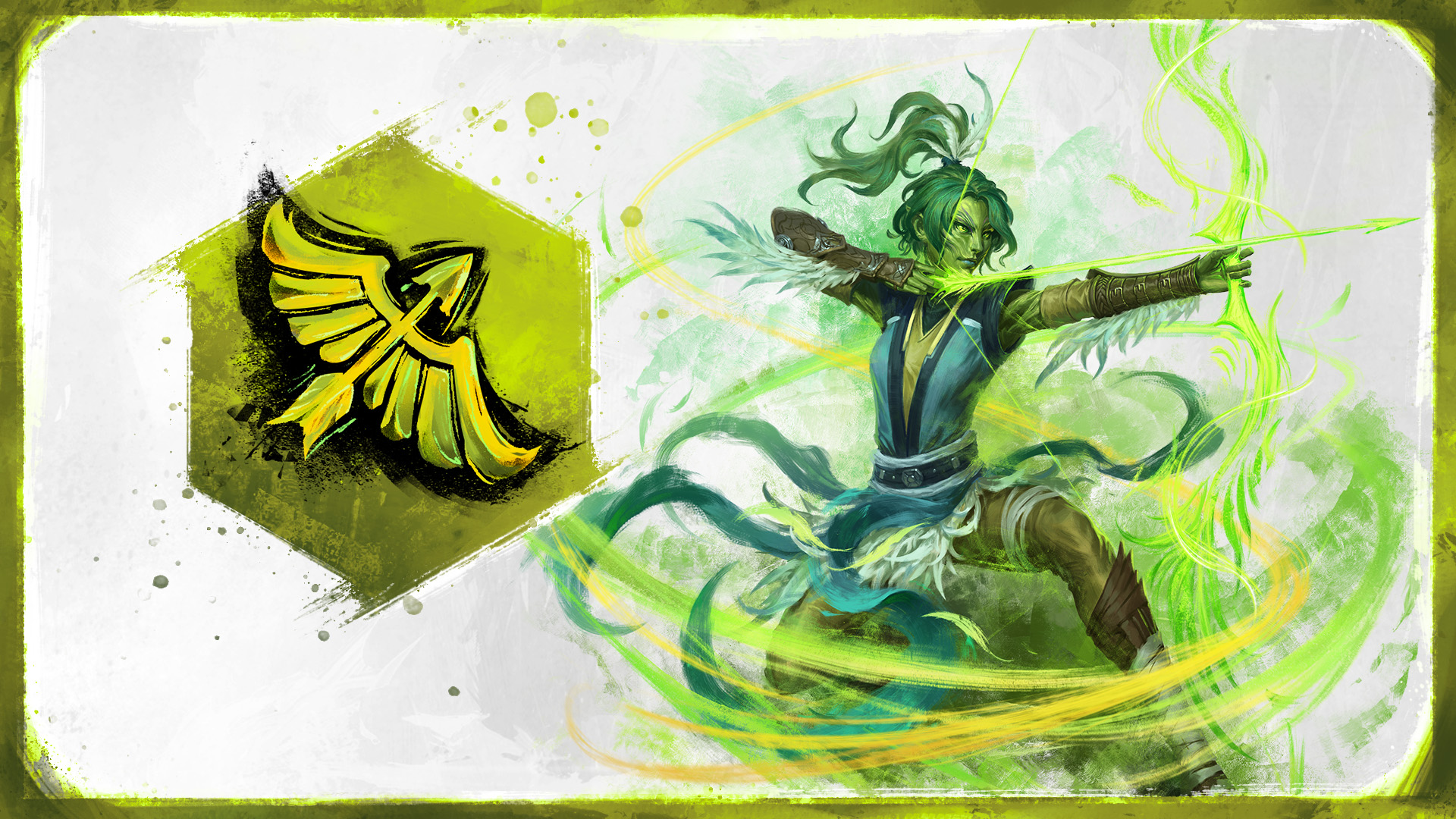
It's finally happened. The Ranger has an elite spec that focuses on the 'range' part. "As we were looking at elite specs, building the elite specs, it was like 'What is Ranger actually lacking?' And it is actually lacking that true ranged elite spec," says Cohen. Galeshot is the answer. It gives Rangers a Cyclone Bow, which, when activated, replaces your equipped weapon with a new set of weapon skills. The skills cost 'arrows' which replenish over time—a bit like Thief initiative. And by spending arrows, you build up towards Hawkeye, a special attack that fires off a hail of arrows towards multiple targets.
The utility skills are all wind themed, too—damage, knockback, swiftness, launches. It's simple—a heavy DPS focus, with some quickness generation if you want a slightly less selfish build—but nails the execution of the core fantasy it's trying to unlock.
Galeshot's upcoming changes
I think Galeshot was among the best received of the elite specs during the beta—and certainly the one I had the most fun with. ArenaNet seems pleased with the reception. "We didn't try to do anything too crazy with the spec," says Cohen, "We had a great idea, strong theme, and the execution was just really done really well."
It feels like Galeshot landed the closest to what its final form will be. Rather than any big feedback points, the focus is now on refining what's there. "We have a handful of polish items … just small notes here and there. This skill needs a little bit more range, or some traits that could be a little bit more interesting."
Thief: Antiquary
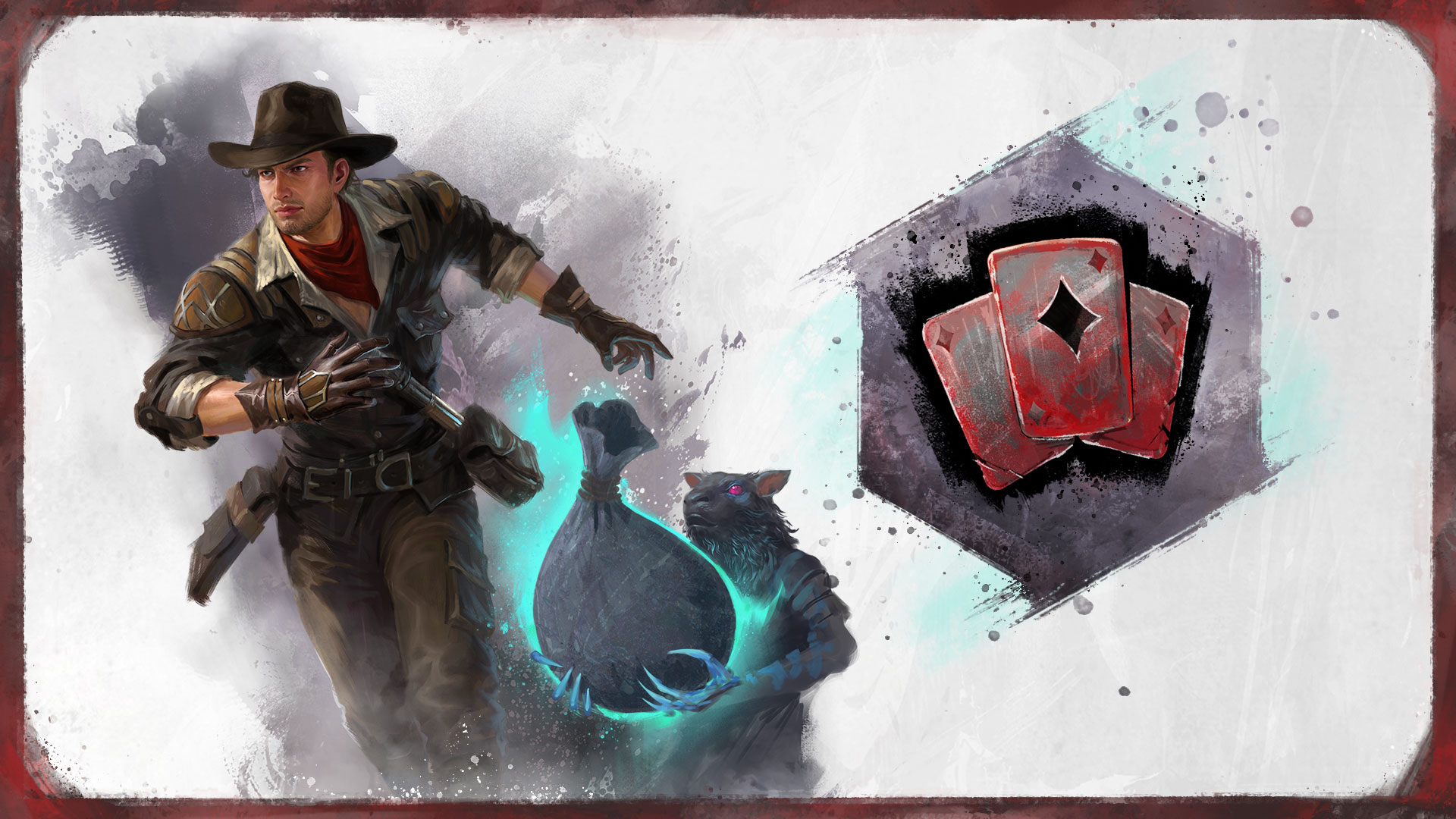
What if the Thief could summon the power of rats? That is the somewhat unusual theme of the Antiquary, an elite spec that gives you a little Skritt buddy who helps enable your treasure hunting fantasies—stealing and deploying artefacts on the battlefield.
"I think our feedback thread on the forums was like about half of it was before the beta even started," says Cohen. "I think it was more than any of the other specs." Why is this? In part it's because Thief players are the most likely to be the edgelord PvP crowd—cool stealth assassins who have no time for a silly little rat pal. (I'm a Thief main, I'm allowed to say this.)
Thematically, then, Antiquary had an extreme love-it-or-hate-it reaction from players—both memes and complaints generated in equal measure. It's also one of the more experimental specs, with an element of randomness built into its design. The usual Steal mechanic is replaced by Skritt Swipe, which randomly awards two artefacts you can pick between from a pool of eight. The utility skills, too, can be activated while still on cooldown, but with a chance to backfire with a negative effect if you risk it.
Antiquary's upcoming changes
The diverse range of opinions on its theme aside, a lot of the feedback from the beta—and this reflects my own experience—is that the randomness leads to situations where you're forced to play the UI instead of the game. On stealing artefacts, you've got to take time to process what they are, what they do, and how to best use them—the lack of consistent results making it hard to build up muscle memory as you play.
"We definitely want to make the trait that guarantees an offensive relic and a defensive relic baseline with the spec," says Cohen. In the beta, the Split Deck trait made it so that instead of picking two relics from the entire pool of eight, one would always come from the pool of four offensive artefacts, and the other from the pool of four defensive artefacts. In the full release, this will now be the default behaviour.
"We don't want those moments where you need a DPS skill and you drew two defensive artefacts, or you need that big defensive moment and, oh, sorry, you got really unlucky and didn't get what you're looking for. So that's going to be that extra layer of mitigation just built into the spec. I think that's going to help a lot."
Engineer: Amalgam
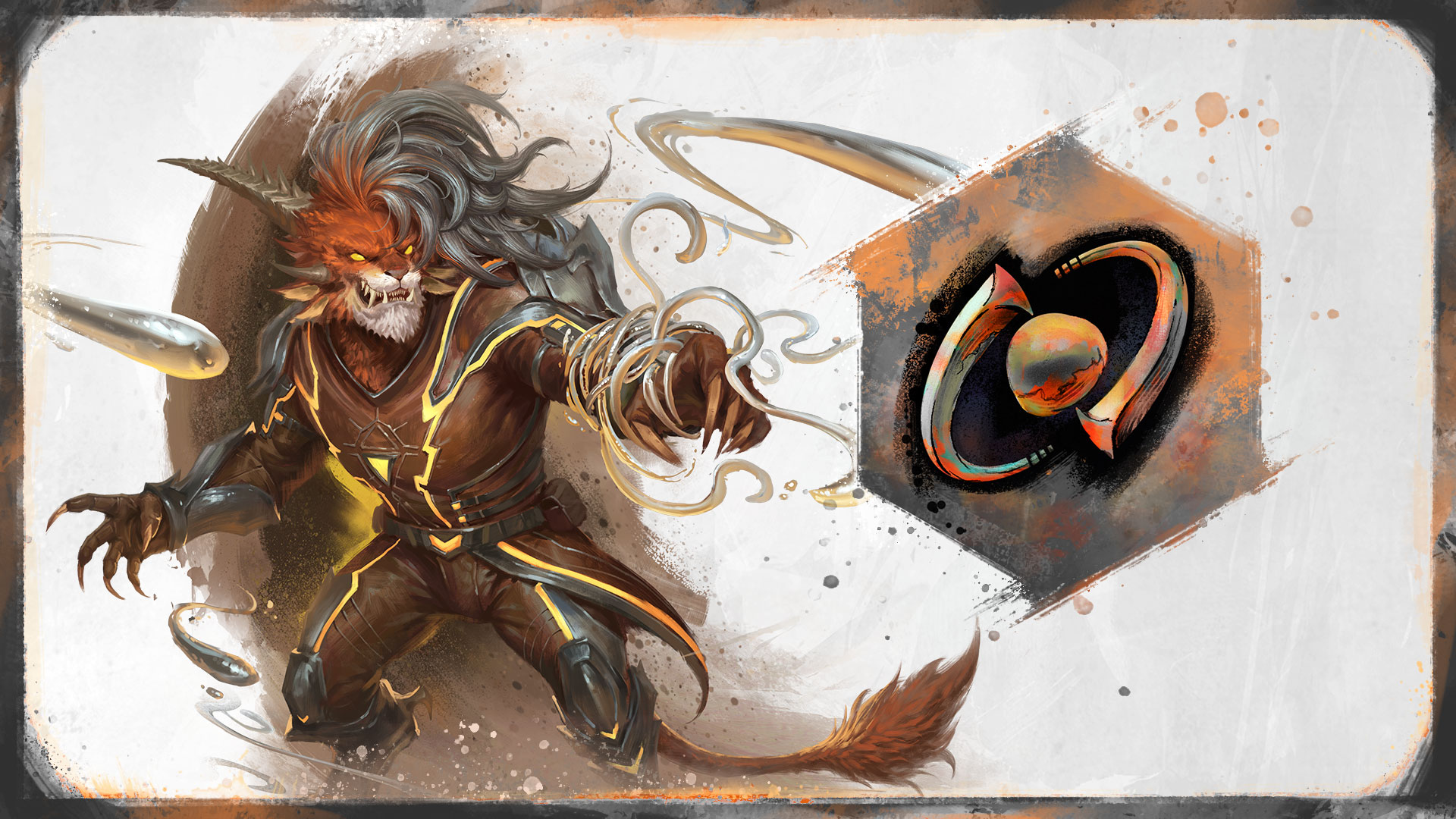
Perhaps the most comic book-coded of the new elite specs, Amalgams create a symbiotic bond with a metallic ooze, using it as a sort of defensive slime suit that can also turn into a comedically giant sword. Instead of the standard tool belt that gives skills based on your equipped utilities, you pick three out of a choice of seven 'protocols'—each offering various defensive and offensive effects, as well as additional bonuses when you enter an evolved state. Offensive Protocol: Obliterate, for instance, gives you the aforementioned giant sword—cleaving and bleeding enemies. And if you evolve while the skill is slotted, you gain 10 stacks of the might boon, as well as eight seconds of improved power and condition damage.
Much like Galeshot then, it feels focused—a strong DPS spec with defensive options that feel well suited to competitive modes. That doesn't mean that ArenaNet isn't trying some new things though. For instance, Defensive Protocol: Thorns introduces a version of the old retaliation boon, named Thorns, that damages enemies that hit you—this time with an internal cooldown so, as Cohen puts it, "it's not going to one-shot the whole zerg in World vs World."
Amalgam's upcoming changes
As a DPS spec, Amalgam significantly overperformed—topping the DPS benchmark leaderboard by some margin. Unsurprisingly then, you can expect nerfs to its damage output, but otherwise ArenaNet seems happy with how the spec landed. "It's useful data for us to see how far above it or below our target these specs land, but it's not bad," says Cohen. "Players are like, 'Oh, the damage is too low on Ritualist'—which is probably true—but that doesn't make the spec bad. We're more concerned if the gameplay of the spec doesn't feel great, which we talked about with Ritualist, where, OK, the shroud needs to be more impactful. But the damage numbers, at the end of the day, we'll bring them up or we'll bring them down."
In that sense, then, Amalgam seems like a success. "Obviously it's over-tuned in terms of power level, but we saw a lot of really strong reception—it's one of the specs that got the most play during the beta because the players are pretty excited. Really strong theme again, this mercurial mold, the shape shifting metal. Really awesome idea. You can make a giant sword, and it's too big and it clips through the ground so we need to shrink it a bit—there's a lot of really cool stuff going on with the spec and I think players really responded to it very strongly."
That said, ArenaNet is looking at the trait that lets you share evolved bonuses to other players. "There's a few things that are maybe a bit too powerful to share … We tried a lot of exciting ideas there. We might need to kind of rein some of those in." It's possible, then, that Amalgam won't retain the ability to grant both quickness and alacrity boons at the same time—something ArenaNet has historically been against. "We're still thinking about it, but I'm not sure that one's going to make it to launch. It's got a chance, but… It might not have the best chance."
Revenant: Conduit
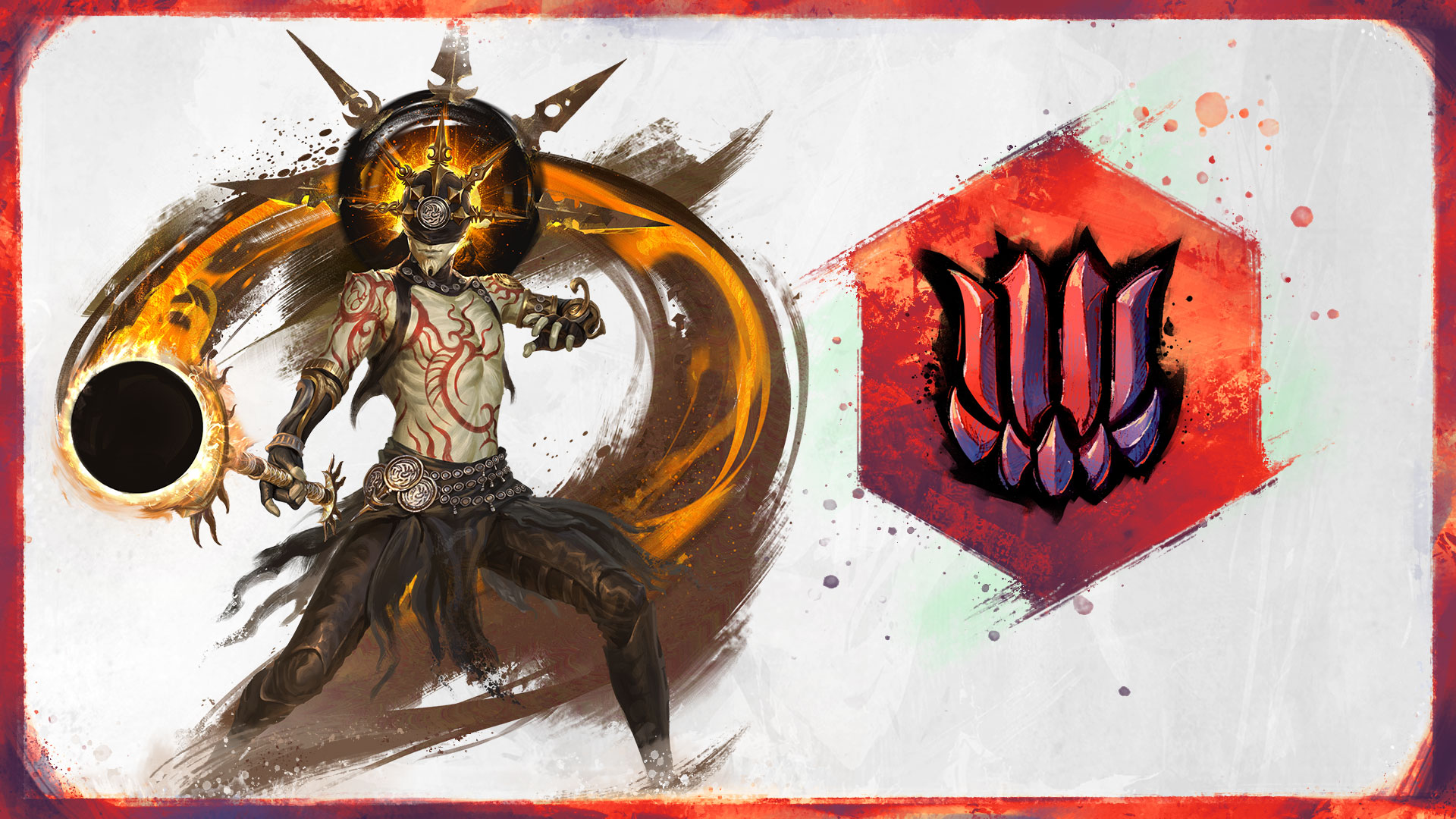
As with other Revenant elite specs, Conduit focuses on channeling a specific character from the game's lore. This time it's Razah, a Guild Wars 1 character recently revealed to have been hiding in GW2 as special events vendor the Mists Stranger.
The hook is that, as an entity formed from the mists, Razah is something of a mimic—utilising skills from multiple professions. For Conduit, this manifests as a new F2 skill called Cosmic Wisdom, which lets you invoke the power of a different profession depending on which legend you're channeling. With the demon Mallyx channeled, for instance, you gain Cosmic Wisdom: Mesmer, which grants bonus condition damage and expertise, and inflicts random conditions when you hit an enemy.
The length of the invocation is based on your affinity with your chosen legend, which you build by using utility skills while they're channelled. The higher your affinity, the longer the Cosmic Wind lasts.
Conduit's upcoming changes
The idea behind Conduit feels strong, but players found that it was lacking in execution. "I think Conduit is a pretty good example of one where we felt that the profession mechanic didn't have quite enough going on," says Cohen. "We had the idea of the new F2 skill, the Cosmic Wisdom, where you could channel the form of these different professions to draw inspiration and play into a lot of different builds. You have the condi build with demon stance, or the bruisery build with Jalis. And I think what we found is that, from a gameplay perspective, the skills ended up just not being super interesting."
The problem is that the bonuses you get from Cosmic Wisdom are generally quite basic: a stat boost and an on-hit effect. "It's pretty on point with how the Avatar skills from Guild Wars 1 work, which was the initial inspiration. But some of those also have some more interesting hooks. So we're thinking, should these be more interesting? Fundamentally they're like stances, so maybe we have a more interesting stance buff as you are in this Cosmic Wisdom state."
ArenaNet is also taking a look at affinity, which is currently quite basic in its execution—a counter that extends the duration of your Cosmic Wisdom. While making the Cosmic Wisdom effects more interesting would make affinity more relevant, Cohen notes that it currently feels divorced from the overall gameplay of the spec at large. "We're definitely thinking a lot about that profession mechanic, because that felt like the big feedback point of the spec—it just didn't do enough."
Warrior: Paragon
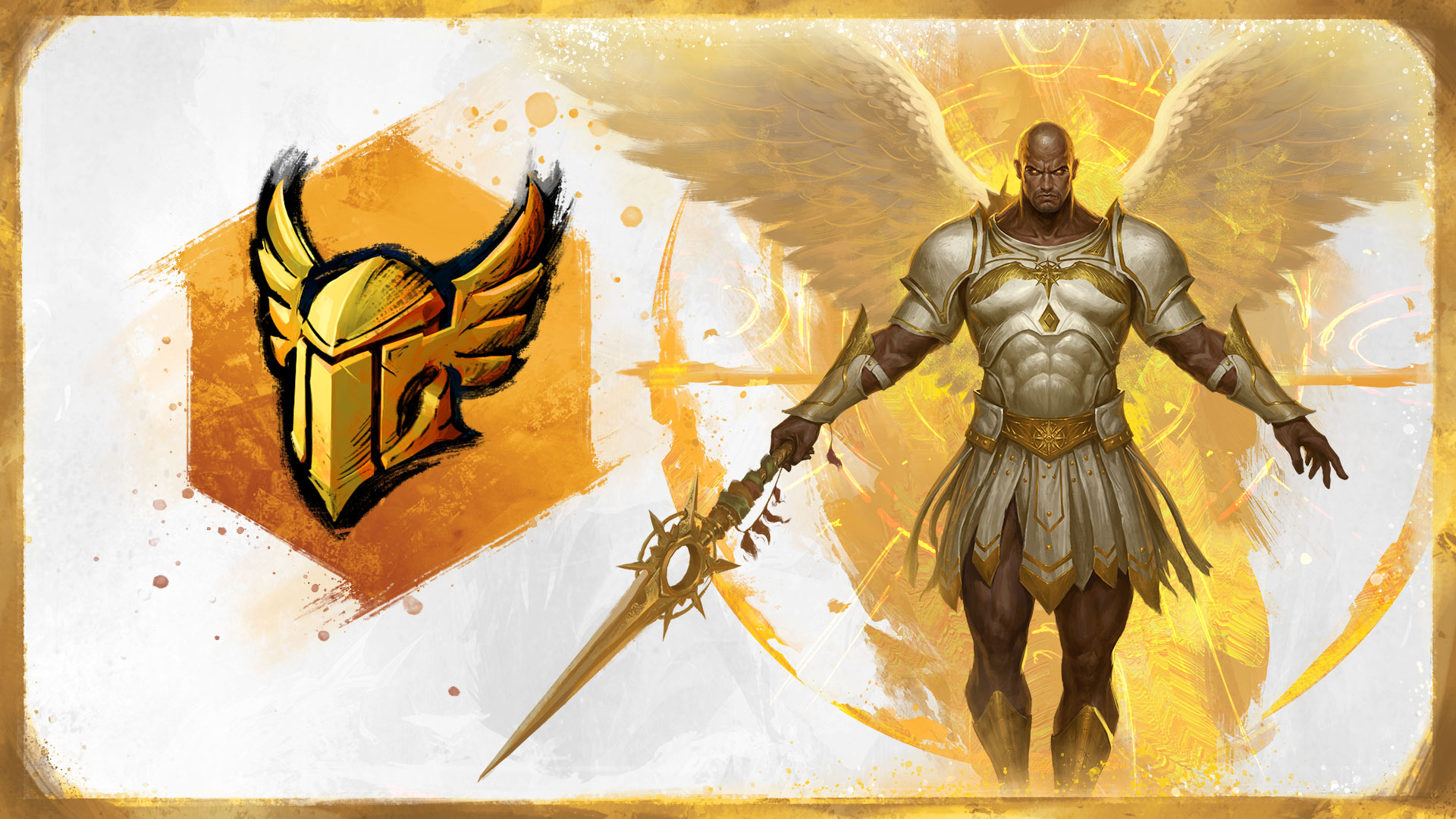
Another Guild Wars 1 profession returning as an elite spec, Paragon gives Warrior a more support-focused kit with three new skills joining the traditional F1 burst: Chant of Action, Chant of Recuperation and Chant of Freedom. These chants pulse boons to allies as long as the Warrior keeps up Motivation—a new resource that gains stacks when bursts are activated. That means you're juggling both the Warrior's traditional adrenaline meter and the new motivation counter to get the most effective support out of the spec.
On the utility side, Paragons get a version of shouts—barking beneficial effects at allies. The twist is that each utility has an 'echo'—an extra effect that triggers after either a set duration, or when the Warrior uses a burst skill. The elite skill feels particularly spicy: giving the player and their allies a few seconds of time where their health can't be reduced below zero.
Paragon's upcoming changes
While there was a sense coming out of the beta that Paragon felt undertuned, one of the main pieces of feedback centred more on the look of the spec. "Players want to see the wings more," notes Cohen, referencing one of the more distinguishing features of the GW1 version of the profession. "We have those on the elite skill, the big moment of, 'Here's the Paragon wings in their full glory.' And, you know, we're thinking about it. There are other places that we can sneak those in, because that is the iconic visual moment."
In terms of balance, Paragon is another spec where ArenaNet is closely looking at the traitlines. "We see the alacrity Grandmaster trait being an example of, here's a trait that just gives alacrity, and that's maybe not a Grandmaster power level trait. We might end up just moving it out to the Master tier, or we might end up adding more stuff on top of it to make it really feel like a true Grandmaster trait. But there's a lot of examples, I think, in the Paragon traitline where it just didn't quite land as we wanted it to."
Another trait consideration ArenaNet is making is enabling a DPS build. "That is another thing that is maybe not as thematic, but is a pretty notable call back to Guild Wars 1. If I just want to be the spear-chucking Paragon that does a bunch of damage, that's not super well enabled at the moment. It is kind of there, but maybe again a Grandmaster trait that gives you the bonus damage isn't the most interesting. So we're thinking, are there ways we can enable that build a little bit better?"
Guardian: Luminary
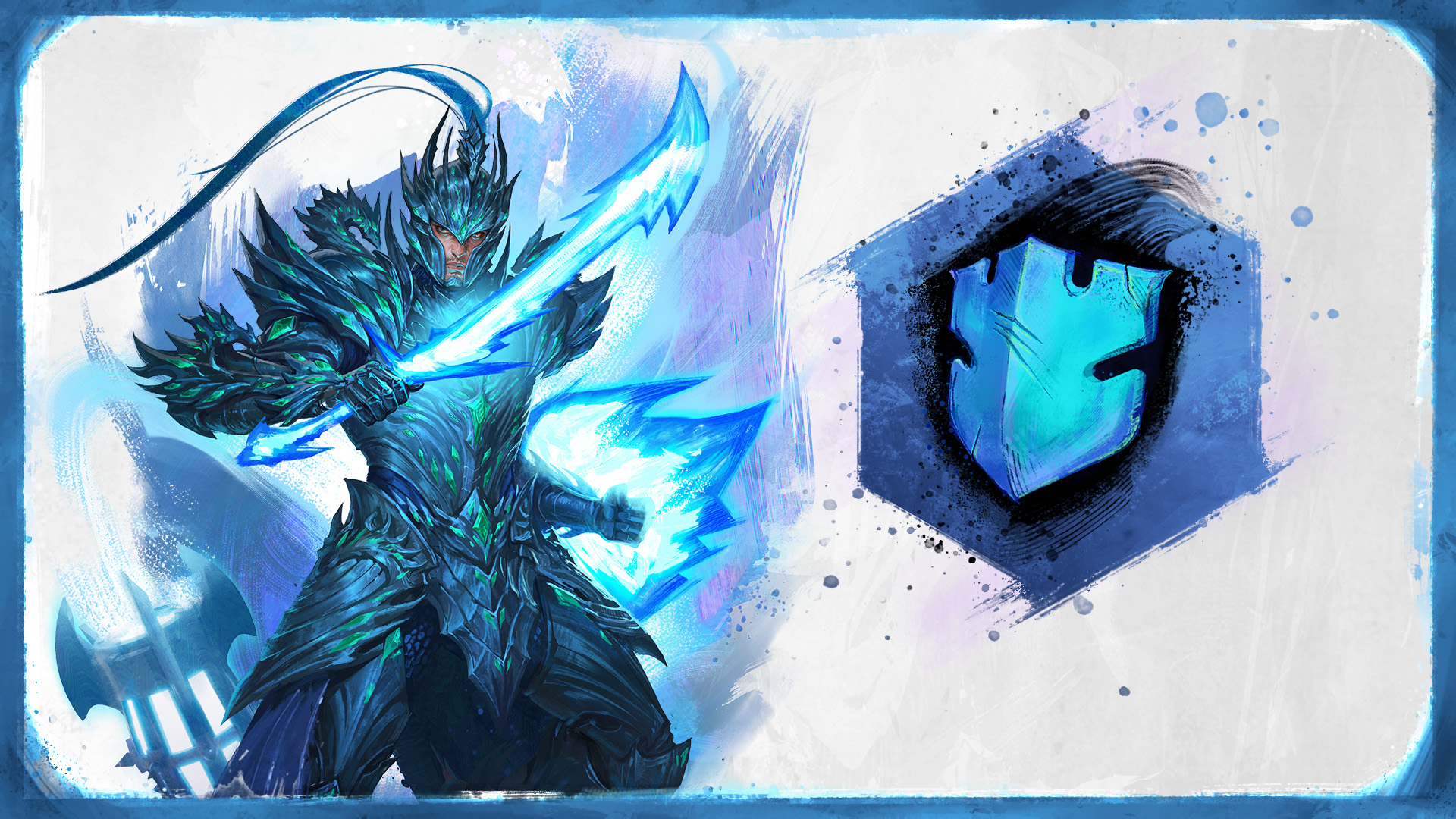
Luminary was designed to be more in line with the core Guardian fantasy, in contrast to the more adjacent roles of its other elite specs. The beta version kept the core Guardian virtue skills, and instead added a new mechanic—the Radiant Shroud—which replaces your weapon skills while active. While in Radiant Shroud, you can access skills that correspond to four radiant weapons. Using a skill performs an action, but also 'equips' the weapon, granting bonuses and a follow-up attack. Equip the radiant hammer, for instance, and you'll initially damage and daze up to five enemies. You can then use the hammer's Shining Spin attack, which does increased damage to dazed enemies.
Unlike a Necro shroud, there's no resource meter to manage to access your shroud. Instead, the cooldown for re-entering shroud increases based on the number of radiant weapons you use. Use one radiant weapon, and the cooldown is just five seconds—increasing an additional five seconds for each extra radiant weapon used.
Luminary's upcoming changes
There are some big changes planned for Luminary's launch, which surprisingly Cohen takes as a positive. Instead of lots of small things to tweak and fix, there were just a few major changes requested, "which kind of feels really good, because, OK, if we just fix all those things, then the spec's awesome." One relatively small immediate change is that Radiant Shroud won't be called a shroud. "Internally we use the word shroud to talk about a lot of mechanics that are maybe not necessarily shrouds. Harbinger has a fairly loose interpretation of shroud, in that it doesn't protect you, but I think we are going to rename the Radiant Shroud. It'll probably be Radiant Forge, but we'll brainstorm it a little bit internally."
As for the more major feedback, ArenaNet is addressing the flow of combat in the 'shroud'. "We see a lot of feedback around some of the skills being a bit too slow. You know, the hammer you float above the air for, you know, 10 years, and then you slam down—maybe it should be sped up a little bit." More generally, players were frustrated with the shroud's cooldown scaling—seeing it as a penalty for wanting to use all of the skills while in shroud. "I don't want to say it's surprising, but it's the opposite of how we envisioned it. It was more of like a reward for just popping in and doing one thing. It's like, OK, if I need my shield block, I can just go into shroud, use my shield block and then come out and then I have less time until I can go into shroud again if I need to go get my sword leap, or my hammer slam."
Nevertheless, that's not how players saw it, so it's being changed—ArenaNet now looking at ways to remove the penalty for using the full potency of the shroud's kit.
ArenaNet is also looking at the shroud's auto-attack, which changes based on the radiant weapon you equip. A neat idea, but one that felt underwhelming in the moment. "It is just the same kind of spell-castey burst of magic around you all the time. And we saw a lot of players say, 'I have a giant hammer in my hands. Why am I not swinging this hammer?' So we're probably going to retool how the basic attack works a little bit and try to give a little bit more incentive to be in that shroud a little longer."
The other big change will focus on the virtues—the Guardian's F1 to F3 skills which, for Luminary, are the same as those used by the core profession. "That's the other thing players called out, they're like, 'Why are they core virtues?' Which, again, is understandable." And so now ArenaNet is looking at making Luminary-specific virtues that better tie into the specific themes of the spec. "We do want to keep them as more of those instant cast, immediate value type of skills. We just want to give them a little bit more Luminary flavour, maybe some interaction with the profession mechanics. But the idea is that these are supposed to be more immediate value as opposed to the big animations of Dragonhunter or Willbender, because we have those big animations in the Radiant Shroud.
Guild Wars 2: Visions of Eternity releases on October 28.

Phil has been writing for PC Gamer for nearly a decade, starting out as a freelance writer covering everything from free games to MMOs. He eventually joined full-time as a news writer, before moving to the magazine to review immersive sims, RPGs and Hitman games. Now he leads PC Gamer's UK team, but still sometimes finds the time to write about his ongoing obsessions with Destiny 2, GTA Online and Apex Legends. When he's not levelling up battle passes, he's checking out the latest tactics game or dipping back into Guild Wars 2. He's largely responsible for the whole Tub Geralt thing, but still isn't sorry.
You must confirm your public display name before commenting
Please logout and then login again, you will then be prompted to enter your display name.

